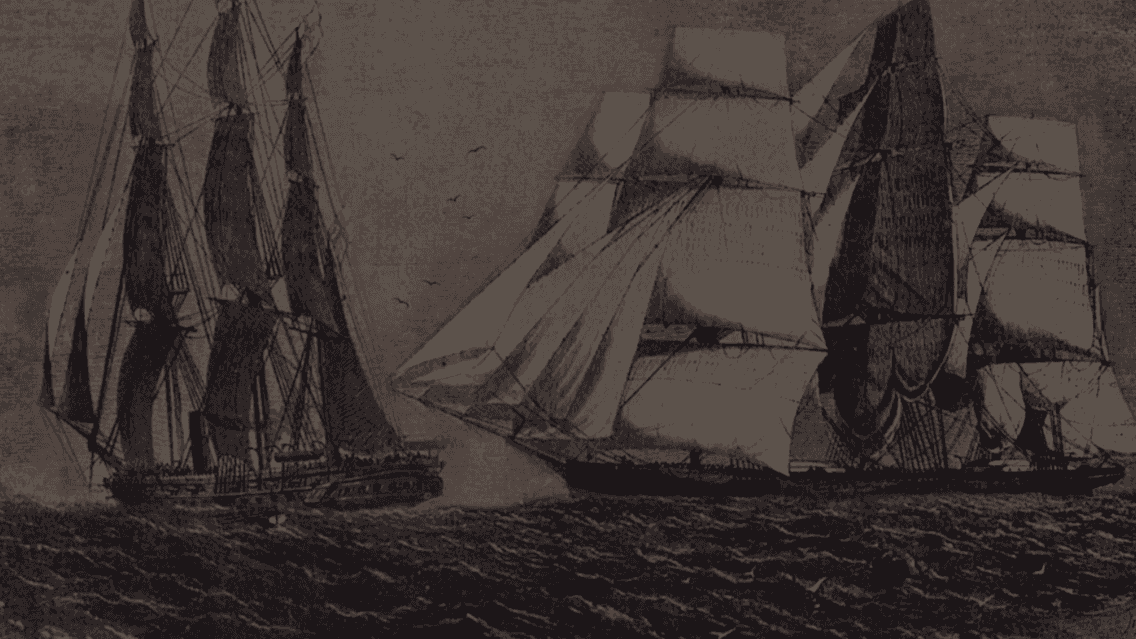Chapter 4
1514–1866, The Transatlantic Slave Trade
The Transatlantic Slave Trade was the largest forced migration of people in world history. Profits from the sale of enslaved humans and their labor laid the economic foundation for Western Europe, the Caribbean, and the Americas. The human cost was the immense physical and psychological toll on the enslaved. Their lives were embedded in every coin that changed hands, each spoonful of sugar stirred into a cup of tea, each puff of a pipe, and every bite of rice.
A Global Trade
The Transatlantic Slave Trade was a massive endeavor with a global reach. It involved ports throughout the Atlantic World. In Europe and the Americas, governments, businesses, and entrepreneurs built and retrofitted ships to meet the high demand for enslaved Africans. The Atlantic was a commercial highway, not so different from those today. Along with money and trade goods, the commodities included enslaved African people and the products of their labor.
Portuguese Slave Brig Paquito de Cabo Verde
This trade, so highly beneficial to the Adventurers, and important to the State; a Trade sanctioned by the Clergy, supported by the Judges, and authorized by the laws.
Robert Norris, 1788
Ships of the Trade
Slave ships were draped with flags of their countries and with banners of the merchant companies that held monopolies to trade in human capital. It was common for at least 30 slave ships to sit at anchor off the same part of the African coast, awaiting human cargo to be transported from shore and stowed in the hull. After several stops along the coast, ships with hulls packed to capacity were ready to set sail across the Atlantic.
Adinkra Symbols
Adinkra symbols are used to convey knowledge, wisdom, and culture. They originate from the Ashanti people of present-day Ghana. Often seen on textiles, the symbols together tell a story. Throughout the African Diaspora, objects made by enslaved people demonstrate the continuity of African knowledge and culture. While there are at least 60 Adinkra symbols, the five featured in the following gallery represent enslavement, freedom, reaching back to regain one’s history, the omnipotence of God, and reconciliation.
Featured Video
Shipping Human Cargo on the Atlantic Highway
This short video serves as a poetic representation of the slave trade and Middle Passage experience. It calls out a few of the tens of thousands of slave ships that crossed the Atlantic. It features reflections from enslaved African people, enslavers, and observers of the trade. African culture is symbolically displayed through the inclusion of select Adinkra symbols.
Asiento de negros, Spain
Asiento de negros
The asiento, like this one granted to Britain in 1713, was a monopoly contract granted by the King of Spain to provide an annual supply of enslaved Africans to Spanish colonies. The control of the contract changed several times as European nation states and private slave trade venturers competed for the coveted position secure human capitol for the Spanish colonies.
1441–1836, Portugal
Portuguese Caravel, ca. 1506
5.8 million African captives transported across the Atlantic to the Americas
1549–1818, France
French Slave Ship, Marie-Séraphique
1.4 million African captives transported across the Atlantic to the Americas
1562–1807, Great Britain
A Liverpool Slave Ship
3.3 million African captives transported across the Atlantic to the Americas
1619–1814, The Netherlands
A Dutch Slave Ship
555,300 African captives transported across the Atlantic to the Americas
1649–1802, Denmark
Danish Slave Ship, Fredensborg II
85,000 African captives transported across the Atlantic to the Americas
Policing the Illegal Trade
Presentation Spyglass
Middle Passage voyages continued after laws were passed that abolished the international slave trade, though slavery continued. This spyglass was presented to officers aboard the Pearl, a British Royal Navy ship, for their capture of the Diligenté slave ship. The Diligenté illegally carried a cargo of 480 enslaved Africans bound for Cuba from Lagos, on the western coast of Africa.

